#maihaugen
Photo
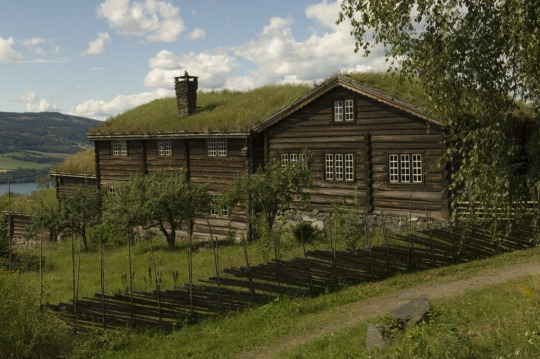
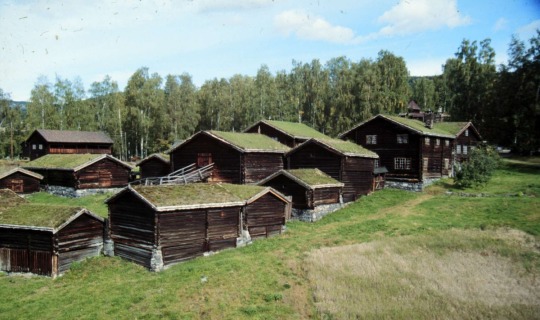
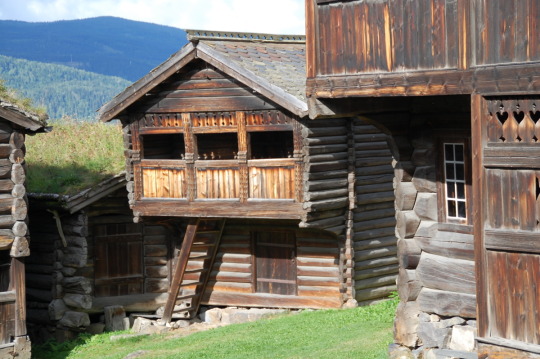
Bjørnstad, a large farm from Vågå, at Maihaugen open air museum, Lillehammer, Oppland, Norway.
39 notes
·
View notes
Photo

Erling Bjørnson, Bjørnstjerne Bjørnsons sønn, på Nedre Aulestad med hest
IDENTIFIER SS-AW-71
AVBILDET PERSON Bjørnson, Erling
History: Glassplatesamling etter Bernt Evenvold (Ben Evans). Samlingen ble tatt vare på av Arne Wold, som var sønn av Evenvolds onkel. Gitt til Maihaugen av Aslaug Wold, enke etter Arne. De fleste motivene er fra Follebu og Lillehammer. De er tatt i perioden 1896-1904, da fotografen reiste til USA. Noen senere kan være tatt av ham ved besøk i Norge i 1923 eller med hans kamera.
Fotografering - 1896 — 1904
FOTOGRAF Evenvold, Bernt (Ben Evans)
INSTITUTION Maihaugen
15 notes
·
View notes
Text
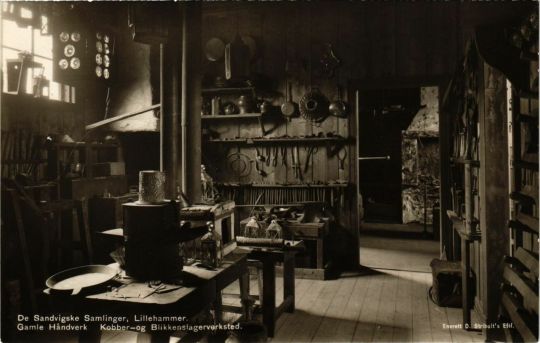
Interior of a house in the Maihaugen open-air museum of Lillehammer, Norway
Norwegian vintage postcard
#old#postcard#postkaart#museum#vintage#briefkaart#postal#norwegian#ansichtskarte#ephemera#interior#maihaugen#lillehammer#photography#norway#photo#air#postkarte#tarjeta#house#historic#sepia#open#carte postale
2 notes
·
View notes
Photo

Tømmerhus med torvtak, Maihaugen, Lillehammer, 1984
6 notes
·
View notes
Text

Maihaugen Open Air Museum in Lillehammer, Oppland, Norway.
0 notes
Text
Lillehammer - An Ideal Getaway
by Deirdre Frost
In so many ways, Lillehammer is a favorite destination for Norwegians and for those with a passion for outdoor sports. Popular with tourists is the exhilarating luge ride down the Olympic-grade toboggan track. Other exciting activities are visiting the ski jumping arena or bobsledding and cross-country skiing in the Olympic Park.
The Olympics torch bearer is visible from the…
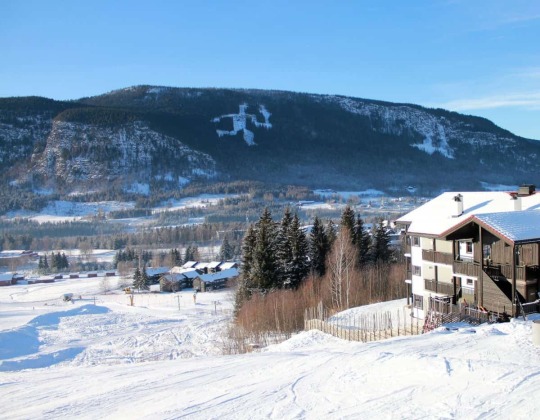
View On WordPress
#Clarion Collection Hotel Hammar Lillehammer#Garmo Stave Church#Hafjell Alpine Center#Hunderfossen Adventure Park#Kvitfjell Ski Resort#Lillehammer#Lillehammer Olympic Park. Lysgardsbakkene Ski Jumping Arena#Lillehammer Tourist Office#Maihaugen Open-Air Museum#Mjosa#Nikkers#Norwegian Olympic Museum#Olympic Winter Games 1994 Lillehammer#Rustad Hotel Sjojoen#Sjojoen
0 notes
Text
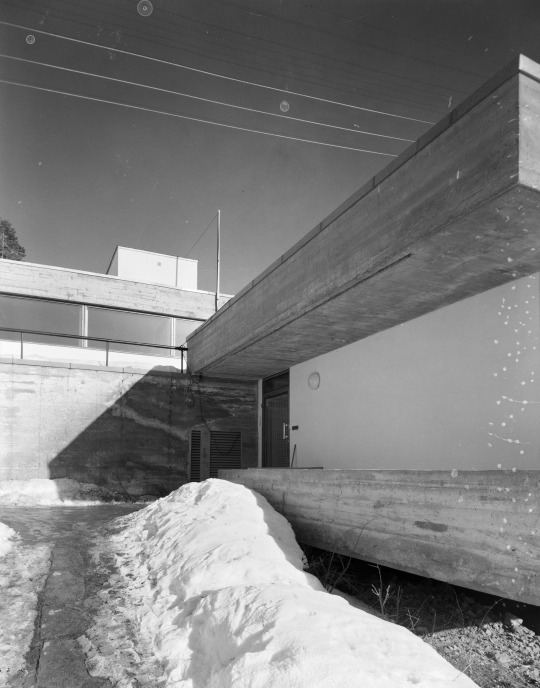
Maihaugen Museum (1958) in Lillehammer, Norway, by Geir Grung & Sverre Fehn
81 notes
·
View notes
Text
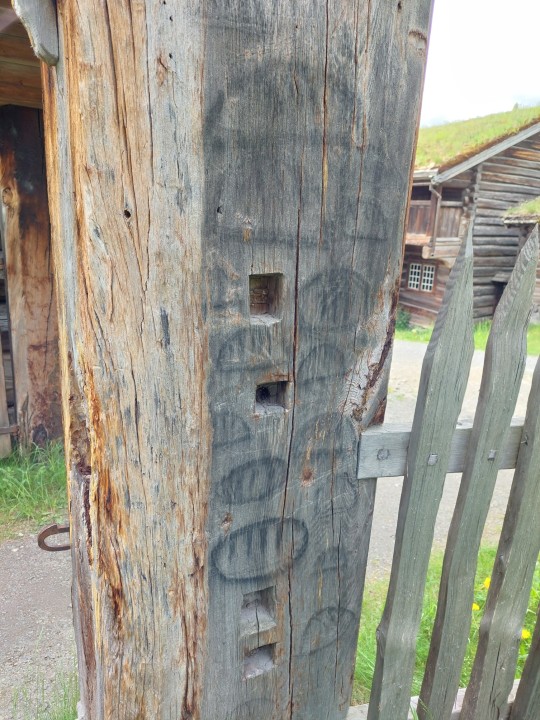
How dare I forget the most important photo I took while in Norway: The age-old bread graffiti on an old wooden post at the Maihaugen outdoor history museum.
71 notes
·
View notes
Text



Norge (2) (3) by Odd Arve og Gunn Anita
Via Flickr:
(1) Åndalsnes
(2) Maihaugen i Lillehammer
#mountains#lakes#boats#docks#buildings#countryside#rivers#cows#flowers#pansies#norway#rauma#romsdal county
6 notes
·
View notes
Text
18 août :
Journée transport pour rejoindre Lillehammer, une petite ville au Nord d'Oslo. J'y arrive après 6 heures et 3 bus. 1er hostel et lit après 9 jours, pour fêter ça c'est pizza et bière. J'ai des larmes aux yeux. Pourquoi il faut se faire du mal pour apprendre à apprécier le peu ?
19 août :
Visite du musée à ne pas rater de Norvège, le Maihaugen. Édifié par un dentiste de la ville début XXe qui, en allant visiter des patients dans des fermes, s'est rendu compte que le mode de vie et d'habitations risquait de disparaître avec l'industrialisation. Il a décidé donc de déplacer (et non de reproduire) des villages/fermes qui sombraient dans l'abandon dans son musée. Son entreprise se poursuivant jusqu'à aujourd'hui, on trouve dans ce musée des habitations du XVIe jusqu'à des maisons high-tech, toute richement décorées. Le tout en plein air et on visite le parc en se promenant. J'y passerai 4 heures sans voir le temps passer.
Puis train jusqu'à Oslo où je logerai 2 nuits chez un hôte trouvé sur couchsurfing, première expérience pour moi avec ce système.
Je fais donc connaissance de Abu, ingénieur software indien venu à Oslo pour le travail il y à 7 ans et qui s'y ait plu. On s'entend très bien, il nous fera a dîner les 2 soirs des lentilles (excellentes!), j'aurais ma chambre et je peux même faire ma lessive. Du luxe.
20 août :
Visite de Oslo. A part quelques bâtiments comme le palais royale ou la cathédrale, la ville est très moderne avec des quartiers sortis du futur. Ballade agréable mais c'est la première fois que je visite une capitale européenne sans y apercevoir son histoire et son passé via son urbanisme, pas de "vieux quartier" dit autrement. Abu me rejoint en début d'aprèm pour me montrer des coins à visiter et pour une bière.
21 août:
Micha me rejoins à Oslo en voiture et mon périple européen en solo s'achève ici. Ca me fait plaisir car mon ami imaginaire dans ma tête commençait à être inintéressant. Il fait beau et on prend direct la route vers l'ouest, avec une pause à l'église xx pour manger. Je découvre à cette occasion la cargaison de fromage, charcuterie, vin, rhum, etc que Micha a ramené. Je retiens mes larmes.
Arrivés au parking du Kjeragbolten à 18h00 (30 € de vol) on court vers le fameux caillou suspendu en haut d'une faille. On y monte pour les photos, 800m au dessus vide qui finis dans le fjord. Puis on se trouve un coin pour la tente avec vue panoramique sur ce même fjord. Il fait beau et on est sublimés par la beauté du paysage.
22 août:
Réveil dans les nuages qui offrent une autre vue. Retour à la voiture et direction le Preikestolen. 25 € de parking et 1,5h plus tard on arrive à cette plateforme carré qui chute direct avec des parois lisses à 600m dans le fjord. Incroyable cette nature. Par contre c'est Eurodisney niveau affluence. On part donc faire une ballade sur les falaises à coté où, comme par hasard, on y croise personne. Puis le temps de poser la tente, tout le monde est partit de la plateforme et on est enfin seul. C'était en tout cas l'idée. Mais un groupe de 40 jeunes en sorte de "colo" foutait un bordel pas possible. Je n'aurais réussit à en balancer que 3 par dessus le rebord, trop nombreux pour tous les achever. Bref, ils ont finis pas partir et laisser la nature tranquille, et nous avec.
2 notes
·
View notes
Photo


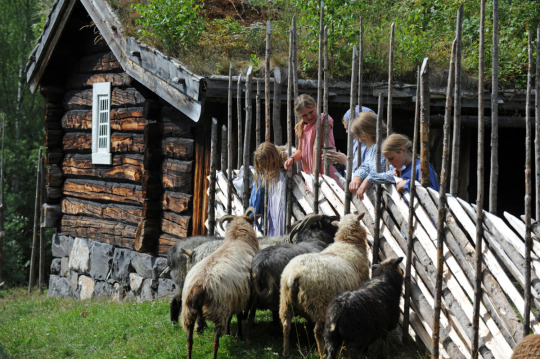
The mountain farms at Maihaugen Open Air Museum in Lillehammer, Oppland, Norway.
21 notes
·
View notes
Photo
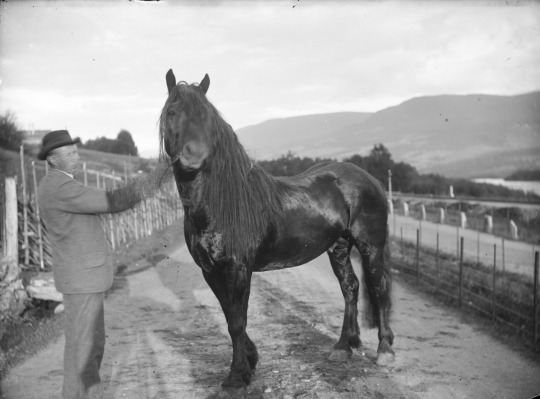
Kort.: Nord Fron ? 6.8.1899. Dalegudbrand. Person med hest.
IDENTIFIER SS-HHL-04972
AVBILDET STED Norge Oppland Nord-Fron
Fotografering - August 6, 1899 (Protokoll)
FOTOGRAF Lie, Hans H.
PART OF COLLECTION Maihaugen
Maihaugen
23 notes
·
View notes
Text
New exhibits showcase trailblazing MIT women
New Post has been published on https://sunalei.org/news/new-exhibits-showcase-trailblazing-mit-women/
New exhibits showcase trailblazing MIT women

This spring, two new exhibits on campus are shining a light on the critical contributions of pathbreaking women at the Institute. They are part of MIT Libraries’ Women@MIT Archival Initiative in the Department of Distinctive Collections. Launched in 2017, the initiative not only adds to the historical record by collecting and preserving the papers of MIT-affiliated women, it shares their lives and work with global audiences through exhibits, multimedia projects, educational materials, and more.
Under the Lens
“Under the Lens: Women Biologists and Chemists at MIT 1865-2024,” examines the work of women in science and engineering at MIT beginning with Ellen Swallow Richards, the Institute’s first female student and instructor, through the present day, when a number of women with backgrounds in biology, biological engineering, chemistry, and chemical engineering — the subjects of focus in this exhibit — hold leadership positions at the Institute, including President Sally Kornbluth, Vice Provost for Faculty Paula Hammond, and Professor Amy Keating, who heads the Department of Biology.
Exhibit curator Thera Webb, Women@MIT project archivist, explains the exhibit title’s double meaning: “The women featured in ‘Under the Lens’ are scientists whose work engages with the materials of our world on a molecular level, using the lens of a microscope,” she says. “The title also plays on the fact that women’s ability to work as scientists and academics has been scrutinized through the lens of public opinion since Victorian-era debates about co-education.”
Items for the exhibit, selected from Distinctive Collections, demonstrate the experiences of women students, research staff, and faculty. They include the 1870 handwritten faculty meeting notes admitting Richards, then Ellen Henrietta Swallow, as MIT’s first female student, stating “the Faculty are of the opinion that the admission of women as special students is as yet in the nature of an experiment.” Materials from alumna and late professor ChoKyun Rha’s “Rheological Characterization of Printing Ink,” circa 1979, include images of the development process of ink and data from experiments. Also on display are a lab coat and rodent brain tissue slides from the neuroscience laboratory of Susan Hockfield, MIT’s 16th president.
“The collections we have related to women at MIT not only show us what their academic and professional interests were, with items like lab notebooks and drafts of papers, but also how our MIT community has been actively supporting women in science,” says Webb. “Many of our alumnae and faculty have been involved with the founding of groups like the Association of American University Women, the MIT Women’s Association, the Association for Women in Science, and the Women in Chemistry Group.”
“Under the Lens: Women Biologists and Chemists at MIT 1865-2024” is on view in the Maihaugen Gallery (Room 14N-130) through June 21. There is an accompanying digital exhibit available on the MIT Libraries’ website.
Sisters in Making
“Sisters in Making: Prototyping and the Feminine Resilience,” on view in Rotch Library, explores the unseen women, often referred to as “weavers,” who were instrumental to the development of computers. The exhibit, the work of Deborah Tsogbe SM ’23 and Soala Ajienka, a current architecture graduate student, spotlights the women who built the core rope memory and magnetic core memory for the Apollo Guidance Computer.
“While we ultimately know the names of the first men on the Moon, and of those who spearheaded the engineering initiatives behind the Apollo 11 mission, the names of the countless women who had a vital hand in realizing these feats have been missing from historical discourse,” Tsogbe and Ajienka write. “The focus of our work has been to uncover the names and faces of these women, who held important positions including overseeing communications, checking codes, running calculations, and weaving memory.”
Working in the archives, Tsogbe and Ajienka sought to identify the women involved in this endeavor, going through personnel logs, press releases, and other historical artifacts. Originally focused on the women working on rope memory, they broadened the scope of women involved in the journey to the moon and were able to name 534 women across 29 classes of work and nine organizations. Tsogbe and Ajienka fabricated a core memory prototype with the names of some of these women stored; they were technicians, data key punchers, engineers, librarians, and office staff from MIT, Raytheon, and NASA. Called the “memory dialer,” the prototype is intended to be a living archive.
Tsogbe and Ajienka created “Sisters in Making” as 2023 Women@MIT Fellows. This fellowship invites scholars, artists, and others to showcase materials from Distinctive Collections in engaging ways that contribute to greater understanding of the history of women at MIT and in STEM. The project also received a grant from the Council for the Arts at MIT.
“Deborah and Soala’s exhibit shows the variety of ways that the rich materials in the Women@MIT collections can be used,” says Webb. “Projects like these really highlight the value of historical collections in ways outside of traditional scholarly publications.”
“Sisters in Making: Prototyping and the Feminine Resilience” is on view in Rotch Library (Room 7-238) through April 8.
0 notes
Text
New exhibits showcase trailblazing MIT women
New Post has been published on https://thedigitalinsider.com/new-exhibits-showcase-trailblazing-mit-women/
New exhibits showcase trailblazing MIT women


This spring, two new exhibits on campus are shining a light on the critical contributions of pathbreaking women at the Institute. They are part of MIT Libraries’ Women@MIT Archival Initiative in the Department of Distinctive Collections. Launched in 2017, the initiative not only adds to the historical record by collecting and preserving the papers of MIT-affiliated women, it shares their lives and work with global audiences through exhibits, multimedia projects, educational materials, and more.
Under the Lens
“Under the Lens: Women Biologists and Chemists at MIT 1865-2024,” examines the work of women in science and engineering at MIT beginning with Ellen Swallow Richards, the Institute’s first female student and instructor, through the present day, when a number of women with backgrounds in biology, biological engineering, chemistry, and chemical engineering — the subjects of focus in this exhibit — hold leadership positions at the Institute, including President Sally Kornbluth, Vice Provost for Faculty Paula Hammond, and Professor Amy Keating, who heads the Department of Biology.
Exhibit curator Thera Webb, Women@MIT project archivist, explains the exhibit title’s double meaning: “The women featured in ‘Under the Lens’ are scientists whose work engages with the materials of our world on a molecular level, using the lens of a microscope,” she says. “The title also plays on the fact that women’s ability to work as scientists and academics has been scrutinized through the lens of public opinion since Victorian-era debates about co-education.”
Items for the exhibit, selected from Distinctive Collections, demonstrate the experiences of women students, research staff, and faculty. They include the 1870 handwritten faculty meeting notes admitting Richards, then Ellen Henrietta Swallow, as MIT’s first female student, stating “the Faculty are of the opinion that the admission of women as special students is as yet in the nature of an experiment.” Materials from alumna and late professor ChoKyun Rha’s “Rheological Characterization of Printing Ink,” circa 1979, include images of the development process of ink and data from experiments. Also on display are a lab coat and rodent brain tissue slides from the neuroscience laboratory of Susan Hockfield, MIT’s 16th president.
“The collections we have related to women at MIT not only show us what their academic and professional interests were, with items like lab notebooks and drafts of papers, but also how our MIT community has been actively supporting women in science,” says Webb. “Many of our alumnae and faculty have been involved with the founding of groups like the Association of American University Women, the MIT Women’s Association, the Association for Women in Science, and the Women in Chemistry Group.”
“Under the Lens: Women Biologists and Chemists at MIT 1865-2024” is on view in the Maihaugen Gallery (Room 14N-130) through June 21. There is an accompanying digital exhibit available on the MIT Libraries’ website.
Sisters in Making
“Sisters in Making: Prototyping and the Feminine Resilience,” on view in Rotch Library, explores the unseen women, often referred to as “weavers,” who were instrumental to the development of computers. The exhibit, the work of Deborah Tsogbe SM ’23 and Soala Ajienka, a current architecture graduate student, spotlights the women who built the core rope memory and magnetic core memory for the Apollo Guidance Computer.
“While we ultimately know the names of the first men on the Moon, and of those who spearheaded the engineering initiatives behind the Apollo 11 mission, the names of the countless women who had a vital hand in realizing these feats have been missing from historical discourse,” Tsogbe and Ajienka write. “The focus of our work has been to uncover the names and faces of these women, who held important positions including overseeing communications, checking codes, running calculations, and weaving memory.”
Working in the archives, Tsogbe and Ajienka sought to identify the women involved in this endeavor, going through personnel logs, press releases, and other historical artifacts. Originally focused on the women working on rope memory, they broadened the scope of women involved in the journey to the moon and were able to name 534 women across 29 classes of work and nine organizations. Tsogbe and Ajienka fabricated a core memory prototype with the names of some of these women stored; they were technicians, data key punchers, engineers, librarians, and office staff from MIT, Raytheon, and NASA. Called the “memory dialer,” the prototype is intended to be a living archive.
Tsogbe and Ajienka created “Sisters in Making” as 2023 Women@MIT Fellows. This fellowship invites scholars, artists, and others to showcase materials from Distinctive Collections in engaging ways that contribute to greater understanding of the history of women at MIT and in STEM. The project also received a grant from the Council for the Arts at MIT.
“Deborah and Soala’s exhibit shows the variety of ways that the rich materials in the Women@MIT collections can be used,” says Webb. “Projects like these really highlight the value of historical collections in ways outside of traditional scholarly publications.”
“Sisters in Making: Prototyping and the Feminine Resilience” is on view in Rotch Library (Room 7-238) through April 8.
#2023#2024#apollo 11#architecture#artists#Arts#Biological engineering#Biology#Brain#chemical#Chemical engineering#chemistry#classes#Collections#communications#Community#computer#computers#data#development#display#Diversity and Inclusion#double#education#engineering#engineers#Exhibits#Faculty#Featured#Global
0 notes
Text
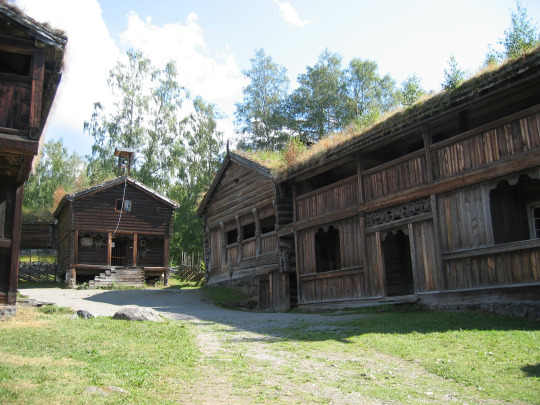
Maihaugen Open Air Museum in Lillehammer, Oppland, Norway.
0 notes
Photo

Maihaugen om våren, Lillehammer, Innlandet, 1981.
#landscape#lake#forest#cabin#ice#pond#spring#folk museum#maihaugen#lillehammer#innlandet#norge#norway#1981#photographers on tumblr
25 notes
·
View notes